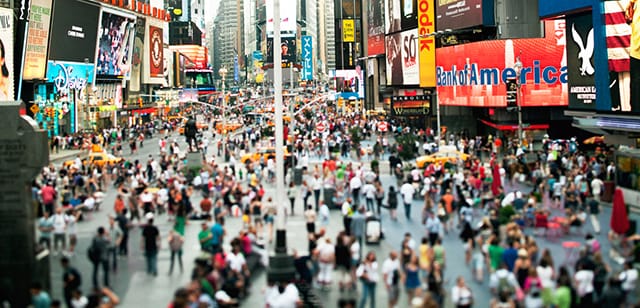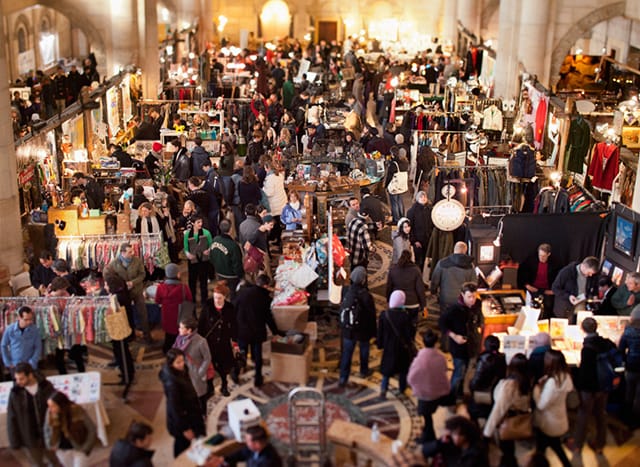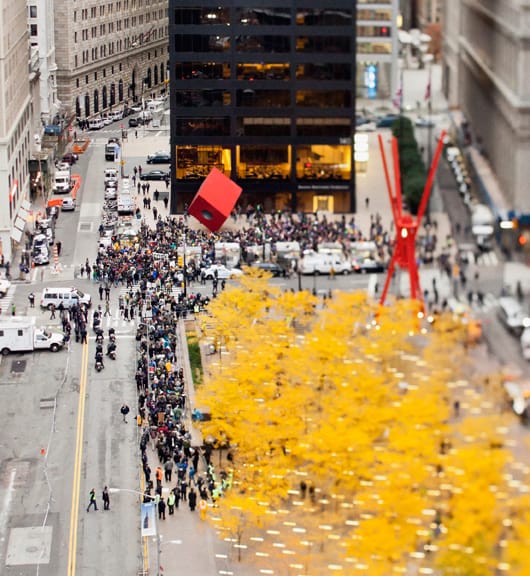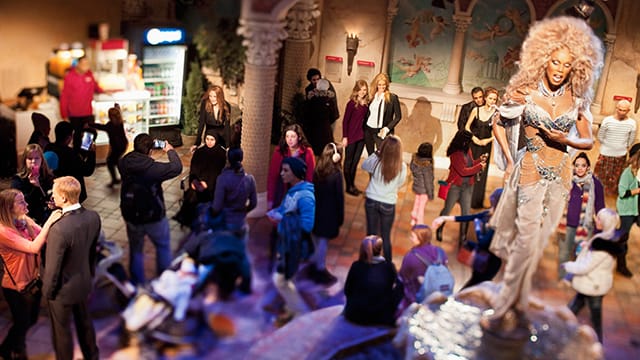Photographs Turn New York City into a Stage for Humanity
Like so many people who come to New York, part of what attracted me was the spectacle of the city itself. I wanted to wander streets thick with history and creative currents, to watch and become part of the human drama just outside my door. That also describes my experience of Susan Wides’s stunning

Like so many people who come to New York, part of what attracted me was the spectacle of the city itself. I wanted to wander streets thick with history and creative currents, to watch and become part of the human drama just outside my door. That also describes my experience of Susan Wides’s stunning new project All the Worlds, a series of nine sensuous, panoramic photographs that capture the fluid beauty of New York City’s theatrum mundi. It is on these stages that Wides sees our very human need to align with the poetry of our collective spirits and to reclaim our humanity in the face of co-opting consumerist and political forces.

I’ve been to One Hanson Place many times, but looking at Wides’s “Brooklyn Flea” (2012) I’m struck by how stage-like the space really is. The arcs could be the wings of a theater, the Ionic columns hint at a Greek proscenium; there’s even a balcony for the chorus. Wides gives us prime, front-row mezzanine seats to view the action in her photographs. And there’s so much of it to take in. We swoon down into a crowd hunting for relics. My eye goes straight to the sharp-focused center achieved by Wides’s moveable lens: a round counter in the middle of the room creates the hub from which the rest of the scene seems to spin out and blur.
I’m thankful for this clear spotlight, this eye in the storm. It’s an anchor for exploring fascinating details and interactions: a man haggling with another in a plaid jacket, a woman staring up at a vintage scale hanging like a full moon in an alternate universe. The focus dissolves and so does my perspective — suddenly I am in the action. I am “in the heart of the multitude… in the midst of the fugitive and the infinite,” as Beaudelaire wrote about his passionate spectator, the flaneur. In the dreaminess of these soft-focus areas time seems to collapse. The unwitting actors are on stage and backstage and between sets; they wear new clothes and they wear old clothes; we see props, costumes, a huge sepia image of Gene Harlow, columns — the history of the room tangling with the present, all converging in an arena of nows.

In “Zuccotti Park” a crowd files around a dark and dour skyscraper. In crisp focus, a large red cube soars dangerously and maybe a little triumphantly over the gathered throng. It seems to have sprung from a matching red base. This is an artifact of Wides’s manipulation of the focal plane. I know that Noguchi’s “Red Cube” in fact sits on the sidewalk, and de Suvero’s “Joie de Vivre” stands on its own. But it’s not just the arch trickery of Wides’s technique that eclipses my logic; it’s also my emotions.
I’m so taken by the symbolism, which is enriched by knowing that this is a shot of an Occupy Wall Street demonstration post-evacuation from Zuccotti Park. The slur of flaming yellow honey locusts, the exploding red sculpture — the protesters are gone but the park is on fire with passion, their presence still marked by lights shining out from the concrete. Unlike the folks in “Brooklyn Flea,” individual features are indistinguishable here. Wides portrays the people as a single organism unified in the ritual of protest. As in many of her photographs, she sets up a tension between the old and the new — the stone building next to the steel and glass, the revived pageantry of protest enacted for a new cause. It is theater at its best.

There’s an amusing pathos to “Wax Museum” where Wides shows visitors posing with life-sized wax superstars. The scene is like a contemporary performance piece. The lines between art and reality are blurred: We so over-identify with our pop idols that it’s hard to tell where the stage ends and real life begins, who is the star and who is the fan. There’s also a sinister edge to this photograph. The social interactions here are not spontaneous or random, but staged by consumerist interests. This menace is even more explicit in “Times Square.” Wides brings corporate icons into sharp focus, while the people are vaguely defined, spectral. Times Square is a spectacle, as Guy Debord would define it, an experience that engages everyone in a performance that’s superficially “mediated by images … the bad dream of an enchained modern society.”
But Wides is not a cynic. At a time when it’s possible to do almost anything virtually, there’s something beautifully human in our DNA that compels us to interact physically with our environment and each other. Wides’s subjects re-enact traditions, contemporizing them, reimagining them on new and old spaces throughout the city. In one of Wides’s more uplifting photographs, “Brooklyn Botanical Garden,” figures stroll placidly in a garden paradise as people have done for thousands of years. It’s a romanticized vision of a harmonious and ecologically balanced world, a pageant about re-connecting with our best and most essential selves.

Italo Calvino wrote that a city “does not tell its past, but contains it like the lines of a hand.” As Wides’s subjects step out into our streets to visit their favorite places — stores, parks, gardens, beaches, playgrounds — she helps us see the city as a multitude of stages where our inner and collective dramas unfold.
All the Worlds continues through April 27 at Kim Foster Gallery (529 West 20th Street, Chelsea, Manhattan)
Correction: An earlier version of this article indicated that the artists created “tilt-shift” photographs. That was incorrect. The artist has explained her process this way: ” I rotate a movable lens to manipulate/alter the plane of focus on 4×5 and digital cameras.”




